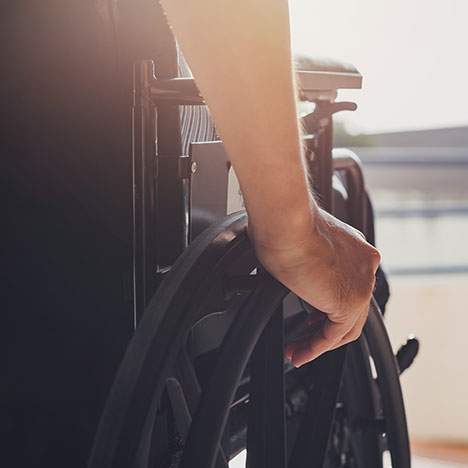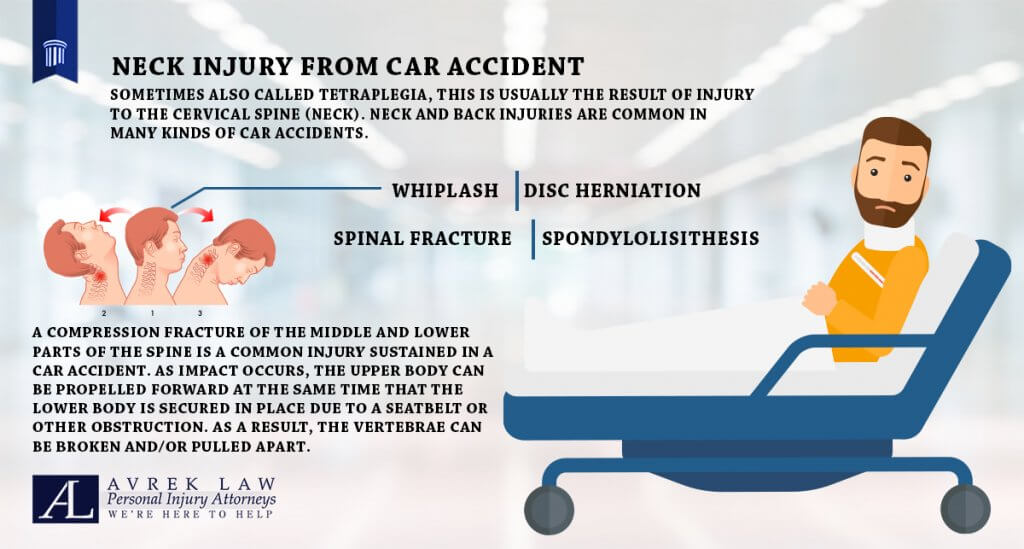Quadriplegic injuries frequently occur from car, motorcycle, sports and construction site accidents, but they can also happen as a result of medical negligence. When the paralysis is the result of someone’s negligence, a lawsuit may be filed for damages against that party – speaking to a quadriplegia lawyer is in your best interest.
Paralysis is more complex than most people realize. Depending on which vertebrae in the spine was injured and the amount of nerve damage from the injury, the paralyzed person may not be able to breathe without the assistance of ventilator. Generally, the higher the spinal injury is in the neck, the worse the damage.

These individuals may have some facial control and be able to speak to some degree, but they will be permanently wheelchair-bound. This in and of itself poses a problem, as the weight of sitting causes pressure sores to develop on the buttocks. If the skin breaks down where these sores develop, bacteria can enter and cause sepsis – bacteria in the blood. Permanent catheters and feeding tubes can also introduce bacteria when they are changed, causing sepsis, a condition that can be fatal.
The amount of personal care that a quadriplegic requires throughout his or her life is astronomically expensive. Equipment is required so that the individual can function with as much quality of life as possible, but this individual will not be able to care for himself or herself without help.
Because quadriplegia means little function and no sensation below the neck, the body’s internal functions may also be affected. Quadriplegia can lead to problems with the respiratory system, cardiovascular system, kidney and bladder, digestive system, and injuries that cause erectile dysfunction and organ failures. These people are also at risk of developing osteoporosis.
Quadriplegia From Car Accidents
The most common lawsuits Avrek Law sees involving quadriplegic injury are a result of car accidents and motorcycle accidents. Motor vehicle accidents that most commonly result in spinal cord injury include:
- Head-on collisions
- Side-impact collisions
- Truck-on-car/motorcycle accident
- Pedestrian-involved accidents
A compression fracture of the middle and lower parts of the spine is a common injury sustained in a car accident. As the impact occurs, the upper body can be propelled forward at the same time that the lower body is secured in place due to a seatbelt or other obstruction. As a result, the vertebrae can be broken and/or pulled apart.
When Are Quadriplegia Injuries Eligible For Lawsuit Claims?
Legally, a person can sue when another party’s negligence is a contributing factor to the cause of the accident that resulted in quadriplegia. You may be eligible to file a lawsuit if the causes of your injury can be traced back to unsafe practices, recklessness, inattentiveness or negligence. Employers, medical practitioners, coworkers, aggressors or sports leagues can all potentially be sued for damages.
It is always in your best interest to speak with a qualified attorney to discuss the next actions you must take and answer questions like “Who pays for physical therapy after car accident injuries?” or “Can I sue a hit and run driver?”
The kinds of expenses that a plaintiff (the injured party in a lawsuit) with quadriplegia may incur include:
- Expenses of surgery (sometimes multiple surgeries) and other medical care for the remainder of the plaintiff’s life, including physical therapy, psychiatry, neurology, orthopedics, urology, gastroenterology, dermatology, rehabilitation and more.
- Home care/home nurse costs.
- Medication costs.
- Changes to the residence to accommodate wheelchair access and other disability requirements.
- Equipment such as wheelchair, ramps, guardrails, grab bars, roll-in shower, power doors, standing frame, voice-activated communication system, special beds and mattresses that reduce pressure, home exercise equipment, transport devices and more.
Quadriplegia Lawsuit Examples
One case example involves a baggage handler at an airport who was struck by a baggage tractor hood when the jet engine’s backwash caused the hood to lift. His cervical spine was fractured, rendering him quadriplegic. It took years for the case to go to trial, but when it did, the jury found that the manufacturer of the baggage tractor and the airline were both at fault. The airline was found to be 70% responsible, while the jury determined that the manufacturer was 30% responsible.
The jury found that the manufacturer should have warned users of the tractor that the hood could swing up. The defendants (the manufacturer and the airline) tried to appeal the award amounts, but those amounts were affirmed by the appeals court.
Another case is a medical malpractice case involved a man who had surgery on his spinal cord to remove a tumor. When he developed post-surgical pain, his surgeon could not see him right away for a check-up. As a result, the blood clot that was causing his pain-initiated nerve damage that left him a quadriplegic. He sued the surgeon and won.
In another case, a man working on a construction site became a quadriplegic when a vehicle rolled over on top of him, crushing portions of his body. He was in the hospital for months and had to undergo multiple surgeries. His lawsuit was with the construction company for insufficient oversight of the work.
When a woman tripped and fell down a staircase that had no rails, she fractured her spine because she was unable to grab onto anything to stop her fall. She was quadriplegic as a result, and she sued the owners of the building.
Another case involved product liability. When a car was involved in a collision and rolled over, the roof of the car collapsed, injuring the spine of the one of the passengers, which resulted in quadriplegia. The case went to trial, and the plaintiff was awarded more than $20 Million.
As you can see, these cases can become enormously complex and proving fault is often far from being cut and dry. Even when a defendant concedes responsibility and does not dispute the extent of the plaintiff’s injuries, that defendant will often appeal a verdict to try to lower the amount of the award.

[Info Graphic]
Neck Injury From Car Accident
Sometimes also called tetraplegia, this is usually the result of injury to the cervical spine (neck). Neck and back injuries are common in many kinds of car accidents.
- Whiplash – Disc Herniation
- Spinal Fracture – Spondylolisithesis
A compression fracture of the middle and lower parts of the spine is a common injury sustained in a car accident. As impact occurs, the upper body can be propelled forward at the same time that the lower body is secured in place due to a seatbelt or other obstructions. As a result, the vertebrae can be broken and/or pulled apart.
Speak With the Best Quadriplegia Lawyer Team
Best case scenarios are when a case is able to be settled out of court, as going to trial is always an expensive proposition. When the parties can agree to an amount without proceeding to court, legal costs are reduced and the time spent to reach a settlement is shorter. In order to come to a settlement agreement out of court, however, the plaintiff often has to accept a smaller amount of money for damages. Going to court is always a risk, however, since there is no way to know whether it will be the plaintiff or the defendant who will prevail with a judge or jury.
If you’ve been injured in an accident that has caused quadriplegia, you have the right to be compensated for not only physical damage but for any emotional and financial damages incurred. Avrek Law is here to help. With more than 50 years of combined experience resolving cases in favor of injured clients, Avrek Law has recovered more than $1 billion in compensation for injury victims in more than 45,000 cases. Contact us for your free consultation to learn more!
